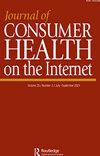Educational Quality of YouTube Videos on Obstructive Sleep Apnea
IF 0.7
Q4 PUBLIC, ENVIRONMENTAL & OCCUPATIONAL HEALTH
引用次数: 0
Abstract
Abstract Obstructive sleep apnea (OSA) is a disorder that can be fatal due to complications about which public knowledge is limited. YouTube, a very popular video site, can be used as a tool for learning about health issues as many videos are uploaded on the site and are viewed by large numbers. Cognizant of the power and potential of media to lead/mislead the audience, we aimed to investigate the utility and reliability of the information on OSA provided in YouTube videos. Queries of Obstructive Sleep Apnea and Sleep Apnea were searched on YouTube. Three independent researchers classified and analyzed 151 videos by a customized scoring system along with likes, dislikes, total view time (min), and views/day. While educational [education (79%) and news (11%)] videos were encountered to be the highest, alternative medicine videos (2%) were to be the lowest. Average total quality score of education and news videos (10.8, for both) was the highest, and alternative medicine videos (5.7) was the lowest. ANOVA testing showed significant differences between all categories and likes (p < .001), dislikes (p = .012), daily views (p < .001), audio-visual quality (p = .028), comprehensiveness (p = .014), and content scores (p = .010). Most videos focused on otorhinolaryngology (51%) and surgery (31%). Likes (n:370.3) and daily views (n:56.7) of the alternative medicine videos were found to be the highest. Likes (n:31.7) and daily views (n:7.1) of the educational videos were observed to be the lowest. Although the number and quality of the educational videos were higher, the less viewing guided health professionals to increase the attractiveness of the videos’ contents.关于阻塞性睡眠呼吸暂停的YouTube视频的教育质量
摘要阻塞性睡眠呼吸暂停(OSA)是一种由于并发症而可能致命的疾病,公众对此知之甚少。YouTube是一个非常受欢迎的视频网站,可以用作了解健康问题的工具,因为许多视频都上传到该网站上,并被大量观看。意识到媒体引导/误导观众的力量和潜力,我们旨在调查YouTube视频中提供的OSA信息的实用性和可靠性。关于阻塞性睡眠呼吸暂停和睡眠呼吸暂停的查询在YouTube上进行了搜索。三名独立研究人员通过定制的评分系统对151个视频进行了分类和分析,包括喜欢、不喜欢、总观看时间(分钟)和观看次数/天。教育[教育(79%)和新闻(11%)]视频最高,而替代医学视频(2%)最低。教育和新闻视频的平均总质量得分最高(均为10.8),替代医学视频的平均总分最低(5.7)。方差分析检验显示,所有类别和喜好之间存在显著差异(p < .001),不喜欢(p = .012),每日浏览量(p < .001),视听质量(p = .028),全面性(p = .014)和内容得分(p = .010)。大多数视频集中在耳鼻喉科(51%)和外科(31%)。替代药物视频的点赞量(n:370.3)和日浏览量(n:56.7)最高。教育视频的点赞量(n:31.7)和日浏览量(n:7.1)最低。尽管教育视频的数量和质量更高,但观看次数的减少引导卫生专业人员增加了视频内容的吸引力。
本文章由计算机程序翻译,如有差异,请以英文原文为准。
求助全文
约1分钟内获得全文
求助全文
来源期刊

Journal of Consumer Health on the Internet
PUBLIC, ENVIRONMENTAL & OCCUPATIONAL HEALTH-
CiteScore
1.30
自引率
12.50%
发文量
32
期刊介绍:
The Journal of Consumer Health on the Internet is the only professional peer-reviewed journal devoted to locating consumer health information via the Internet. In this journal librarians and health information providers describe programs and services aimed at helping patients and the general public find the health information they need. From the Editor: "Studies have shown that health information is one of the major reasons that people worldwide access the Internet. As the amount of health information on the Web increases exponentially, it becomes critical that librarians-including public and medical librarians-be knowledgeable about what is available online and be able to direct users to reliable, accurate, quality information."
 求助内容:
求助内容: 应助结果提醒方式:
应助结果提醒方式:


